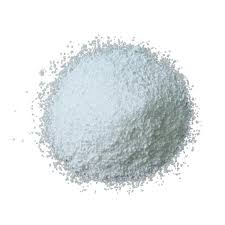In the world of fashion, interior design, and branding, color plays a pivotal role in conveying emotions, setting moods, and creating lasting impressions. However, not all colors are created equal when it comes to versatility. Some colors can seamlessly blend with a variety of palettes, while others may clash or overpower. This article delves into the concept of universal colors—those that go with everything—and explores their applications across different domains.
Understanding Color Theory
Before we dive into the colors that harmonize with virtually any palette, it’s essential to grasp the fundamentals of color theory. At its core, color theory is the study of how colors interact with one another. It encompasses the color wheel, which categorizes colors into primary, secondary, and tertiary groups, and explains concepts like complementary, analogous, and triadic color schemes.
- The Color Wheel: A Foundation for Versatility
The color wheel is divided into warm and cool colors. Warm colors (reds, oranges, yellows) evoke energy and passion, while cool colors (blues, greens, purples) tend to be calming and serene. Understanding where a color falls on this wheel can help you determine its compatibility with other colors.
The Universal Colors
Now that we have a foundational understanding of color theory, let’s explore the colors that are renowned for their versatility.
- White: The Quintessential Neutral
White is often regarded as the most versatile color. It symbolizes purity and simplicity and can create a sense of space and cleanliness. In fashion, a white shirt can be paired with virtually any bottom, from jeans to skirts. In interior design, white walls can serve as a blank canvas, allowing furniture and decor to shine.
- Black: The Timeless Classic
Black is another color that transcends trends. It exudes sophistication and elegance, making it a staple in both wardrobes and home decor. A little black dress is a fashion must-have, while black furniture can add a touch of modernity to any space. Its ability to absorb light also makes it a powerful tool for creating contrast.
- Gray: The Ultimate Balancer
Gray is often overlooked but is incredibly versatile. It can be warm or cool, depending on its undertones, making it an excellent backdrop for other colors. In fashion, gray can be paired with bright hues for a striking look or with other neutrals for a more subdued palette. In interiors, gray walls can complement vibrant artwork or furniture, providing a sophisticated balance.
- Beige: The Warm Neutral
Beige is a warm neutral that pairs beautifully with both warm and cool colors. It brings a sense of warmth and comfort to any space or outfit. In fashion, beige trousers can be matched with a colorful top or a classic white shirt. In home decor, beige can soften bold colors, creating a harmonious environment.
- Navy Blue: The Versatile Dark
Navy blue is a deep, rich color that works well in both casual and formal settings. It can be paired with a wide range of colors, from pastels to jewel tones. In fashion, a navy blazer can elevate a simple outfit, while in interior design, navy walls can create a cozy yet sophisticated atmosphere.
Practical Applications of Universal Colors
Understanding which colors go with everything is not just theoretical; it has practical applications in various fields.
- Fashion
When curating a wardrobe, investing in universal colors can maximize outfit combinations. For instance, a capsule wardrobe featuring white, black, gray, beige, and navy can provide endless styling options. Accessories in vibrant colors can be added to create focal points without overwhelming the overall look.
- Interior Design
In interior design, using universal colors as a base allows for flexibility in decor choices. A neutral palette can be accented with colorful throw pillows, artwork, or rugs. This approach not only creates a cohesive look but also allows for easy updates as trends change.
- Branding
For businesses, choosing a color palette that includes universal colors can enhance brand recognition and appeal. Brands that utilize black, white, and gray often convey sophistication and timelessness, while those that incorporate beige or navy can evoke feelings of trust and reliability.
Conclusion
In conclusion, understanding what colors go with everything is essential for anyone looking to enhance their personal style, create a harmonious living space, or build a strong brand identity. By incorporating universal colors like white, black, gray, beige, and navy into your palette, you can achieve versatility and timelessness in your choices. Whether you’re dressing for an occasion, designing a room, or developing a brand, these colors will serve as your reliable allies, ensuring that you always look and feel your best.

